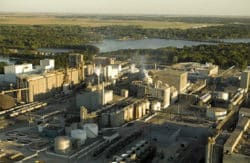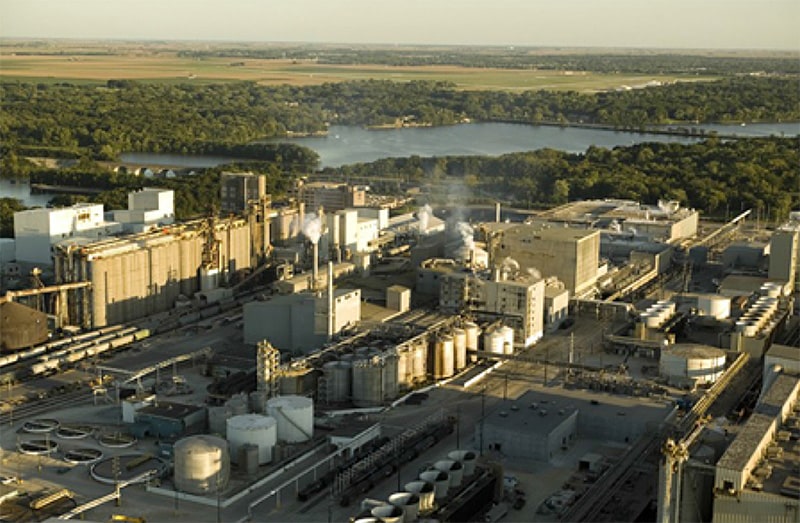
Geoengineering Monitor has long reported on the speculative concept of “negative emissions”, together with certain favored approaches such as bioenergy with carbon capture and storage (BECCS) – a geoengineering technique which recent studies show would have significant negative impacts on biodiversity, food security, and livelihoods.
To get a better sense of the technologies under discussion, we sent a correspondent to a “Carbon Dioxide Removal / Negative Emissions Technologies (NETs)” workshop earlier this month, co-sponsored by fora associated with American University, University of California – Berkeley, and Arizona State University.
A primary theme of the workshop was understanding NETs in the context of the Paris Agreement. Katharine Mach, senior research scientist at Stanford University and director of the Stanford Environment Assessment Facility, opened the day by describing the “pledge, review, and revise” approach of the agreement, and singled out the key role envisioned for BECCS in the models that underpin its target to stay below 2 degrees C average global temperature rise.
Wil Burns, co-director of the Forum for Climate Engineering Assessment at American University, made the case that the agreement provides authorization for countries to use artificial carbon sinks (CDR and NETs) as part of their Paris pledges. Burns built his case off of the UN Framework Convention on Climate Change (UNFCCC)’s broad definition of mitigation, which includes not only emissions reductions, but also the enhancement of sinks.
However, insofar as they aim to deliberately increase carbon sequestration on a large scale that may affect biodiversity, all proposed artificial carbon sinks are geoengineering proposals – and therefore subject to a de facto moratorium under the UN Convention on Biological Diversity (CBD), most recently reaffirmed at the end of 2016. The CBD’s moratorium derives from the application of the precautionary principle, noting that the potential impacts of geoengineering on biodiversity and traditional livelihoods have been scarcely studied.
Ongoing discussions within the multilateral institutions will likely provide more clarity on the boundary between climate mitigation and geoengineering. But for the meantime, it appears clear that attempts to push CDR techniques through the mitigation loophole will run up against the CBD moratorium. And judging by the other panels at the Berkeley CDR / NETs workshop, that’s probably a good thing.
Outside of the lively debate on BECCS – the star child of CDR advocates – the other approaches on offer ranged from relatively mundane reflections about enhancing rocks and protecting forests, to more fantastical proposals for offshore kelp-platforms riding ocean thermals. The general feel was that of an oddball trade show, with subsequent presenters arising to pitch their particular techno-fix, all seemingly underlaid by a dark acknowledgement of the social and political realities preventing meaningful climate action.
Daniel Sanchez, a postdoc at Stanford University’s Carnegie Institution for Science, kicked off the BECCS panel with a detailed technical and economic assessment of deployment possibilities, making the case that BECCS could enable a carbon-negative power system in western North America by mid-century, given a stringent emissions cap. Interestingly, Sanchez noted that the primary value of BECCS lies in its capacity to function as an offset, and less so as a source of electricity.
This point was addressed indirectly by Daniel Babson, technology manager at the Bioenergy Technologies Office within the Department of Energy (DOE). Babson asked attendees to “imagine BECCS in a world with cheap CO2 and cheap energy,” noting that the Trump administration has upended assumptions about an inevitable national carbon price or cap leading to a more competitive position for future bioenergy deployment. Babson’s prognosis on whether BECCS could flourish without a price on carbon wasn’t particularly sunny, and he noted that the DOE was reorienting towards near-term carbon sequestration via value-added products, such as wood for use in buildings or infrastructure.
Babson also referenced another way in which the new administration is a setback for BECCS. US government funding for carbon-negative bioenergy R&D falls squarely between the Office of Fossil Energy and the Office of Energy Efficiency and Renewable Energy – both of which are reportedly on the chopping block in the Trump administration’s proposed budget. If the Trump administration is successful in dismantling these offices, Babson will not only be out of a job (as he wryly joked), but BECCS proponents will have lost a critical source of funding and research.
Tim Searchinger, a research scholar at Princeton University and senior fellow at World Resource Institute, functioned as the black sheep of the panel discussion, making the case that studies showing large bioenergy emissions reductions potential are based on double-counting emissions reductions due to plant growth, and that replacing fossil fuels with bioenergy could actually increase GHG emissions, in addition to having major impacts on biodiversity and food security.
Searchinger asserted that so-called marginal or abandoned lands proposed for bioenergy feedstocks are largely already in use by local communities, or required by ecosystems to stay healthy. Margaret Torn, co-director of the Climate and Carbon Sciences Program at Lawrence Berkeley National Laboratory, also raised questions about the ecological limits to bioenergy expansion, focusing on land and resource requirements such as nitrogen and phosphorus. Searchinger made the case that using all of the world’s current harvested biomass would only meet one fifth of the world’s energy needs in 2050, in the process displacing communities and undermining biodiversity.
The final speaker of the day was Janos Pasztor, former senior advisor on climate to the UN secretary general, and recently appointed as director of the new Carnegie Climate Geoengineering Governance Project.
Pazstor, fresh off a meeting with California governor Jerry Brown, introduced the new “C2G2” project as a response to the need for systematic governance frameworks to guide geoengineering research and potential deployment. The aim of the project, according to Pazstor, is to engage with non-governmental organizations, governments, and other groups to build a network of people who could feed into future governance mechanisms.
While building out a coherent governance framework to approach ethical, social-ecological, and technical aspects of geoengineering appears to be a promising step, Geoengineering Monitor believes that it will only be successful if the voices of women, peasant farmers, Indigenous peoples, trade unionists, and the poor have a firm seat at the technology assessment table. Otherwise, C2G2 and similar initiatives could easily end up as just a normalization exercise for geoengineering, dominated by those with a material interest in promoting technofix distractions at the expense of solutions that address the root causes of climate change and biodiversity loss.





1 thought on “Pulling carbon out of the air: NETS, BECCS, and CDR”
Comments are closed.